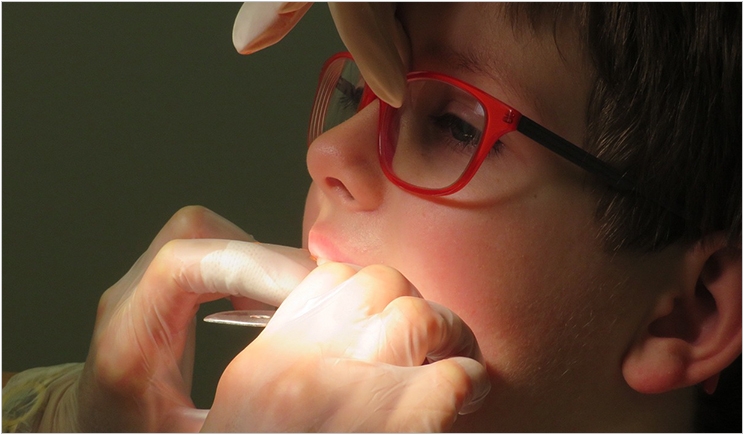
This February, dentistrytoday.com celebrates National Children’s Dental Health Month with news stories, interviews, and blogs all about safeguarding pediatric oral health. #NCDHM
Providing early childhood preventive and corrective dental care occupies a high priority in our profession. The American Academy of Pediatric Dentistry has long been an advocate of the one-year-old checkup and the establishment of a dental home for children. Lack of physical access to dental care has been commonly cited as a barrier to accomplishing these goals.
But an even more serious impediment may be the average dentist’s dread of encountering an apprehensive, reluctant, crying, screaming, and often physically violent young child, likely accompanied by a worried, nervous, intrusive, and overly protective parent.
Children behaving badly are frequent problems not only for parents but for authority figures in general, including teachers, coaches, and dentists. Some of today’s parents seem to believe that raising a child is about making excuses, but not demanding accountability; freedom to make choices, but not setting boundaries; and rewards for minimal accomplishments, but not punishment of misdeeds. I’ve also seen a lack of discipline and a lack of consistency among many parents.
Many mothers and fathers now ask and hope their children will behave rather than expecting them to do their bidding, and they often find themselves justifying and explaining their position of authority to their children. The ability to say “because I said so” in response to “why” has become obsolete. By the way, these same parents are the ones who want to be in the operatory during treatment to help you and “protect” their child.
So now the pressure is on! When facing a difficult to manage child in need of even the simplest treatment, more and more dentists are relying on mind-altering drugs in the form of premedication, sedation, and general anesthesia and active restraints to accomplish the treatment in the shortest time with the least amount of discussion or resistance, in lieu of attempting to establish a straightforward line of communication with the child. And this brings me to the point of this discussion.
I have no argument with the premise that there are times when sedating a child is the best course. But dentists who rely upon drugs as their first choice, as their basic modus operandi, without exhausting behavior management approaches will leave many young children relegated to “sleepy time” that could be managed differently if only these dentists were better trained and more confident.
Rampant caries, whining, crying, screaming, physical resistance, and parent preference in and of themselves should not provide an automatic ticket to the administration of drugs. Moreover, many children are sedated visit after visit instead of trying another technique that would take more time and effort but might likely eliminate the need for future sedation.
From my perspective formed during my 55-year career as a practitioner, a child advocate, and a teacher, the most important responsibilities of a dentist and the dental team—above and beyond the cleaning, the drilling, and the filling—are the mentoring, the nurturing, and the coaching that will help that little child patient become an accepting, cooperative, and even enthusiastic adult patient in the future.
A child who is under the influence of sedating drugs, nitrous oxide, general anesthesia, or heavy premedication is not capable of fully comprehending the “tell, show, and do” back and forth communication so vital in eliminating a patient’s fear of the unknown. Therefore, each succeeding visit is a traumatic repeat of the previous one.
So this is my plea! I wish that dental schools and their faculty would dedicate themselves to providing dental students, not just advanced-degree pediatric specialists, with enough training and knowledge to be confident, competent, and comfortable treating the very young child patient. Supplementing the dental school curriculum should be more postgraduate continuing education emphasizing the management of child behavior, not merely focused on sedation techniques and their accompanying safety measures, which obviously are very important as well.
To put it simply, the obligation of the dentist and the dental team to deploy their person-to-person skills in an effort to “make friends” with a young child is every bit as important as providing competent clinical treatment. This approach will provide lifelong positive feelings about dentistry and dentists. Masking the experience with the use of mind-altering drugs may provide an easy way out to achieve short-term results, but it short-changes the child when it comes to encouraging a long-term positive dentist-patient relationship.
Dr. Berman is an internationally recognized pediatric dentist with a career as a successful practitioner and as a popular world-class lecturer spanning more than 5 decades. He’s still one of the principal dentists in a thriving practice in Chicago, Ill. He has been an ambassador for dentistry as a health reporter on CBS (News Radio 78) and via media appearances as a consumer advisor for the ADA, the Chicago Dental Society, and the Academy of Pediatric Dentistry and as co-author of Essentials of Modern Dental Practice. He has published numerous articles and is a member of many professional and service organizations including Honorary Membership in the Hinman Dental Society. He can be reached at marvy18@prodigy.net.
Related Articles
Try Magic and Comedy to Engage Patients and Ease Dental Anxiety











